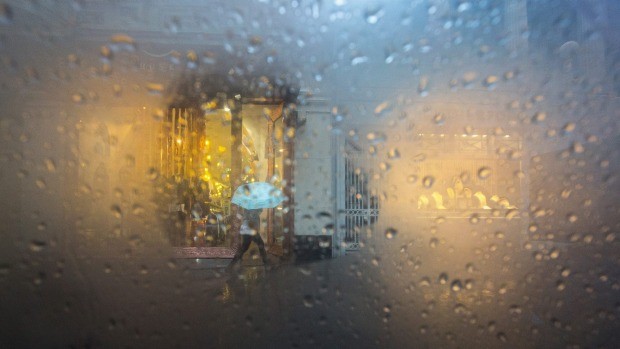How to Fix Rising Damp with Damp Solutions
Winter is back! With the cold, dark and rainy days, damp issues show up more often too. Did you come across issues such as bubbling paint, flaking mortar, musty smells or rotting building materials? What kind of damp is affecting your home? Let us help you find out with our guide to a damp house.
Tech-Dry offers unique solution for combating rising damp: Damp Course Cream. Alternatively, there is Damp Course Fluid, each product serves unique purposes and suits different scenarios.
Damp Course Cream is an innovative and environmentally friendly option. This cream is applied directly into drilled holes in the mortar line, spreading and forming a continuous barrier against moisture. Damp Course Cream is ideal for modern buildings and homes with standard wall thicknesses. It’s also perfect for DIY enthusiasts due to its easy application process. If you prefer a less invasive solution with minimal disruption to your property, the Damp Course Cream offers a convenient and effective alternative.
Damp Course Fluid is a traditional method that has proven effective for many years. It involves injecting a silicon-based fluid into the walls, which then forms a water-repellent barrier. This solution works best for older buildings with thicker walls, where a deep penetration is necessary to stop the rising damp. If you’re dealing with substantial damp issues in a historic property, Damp Course Fluid is the go-to option. It’s also suitable for use in commercial buildings and large-scale projects where long-term durability is crucial.
For more detailed information on these products, visit the Damp Course Cream and Damp Course Fluid product pages. By understanding the specific benefits and applications of each product, you can choose the best solution for your property’s rising damp issues.
Exploring Rising Damp, Penetrating Damp, and Condensation Issues
Rising damp, penetrating damp and condensation are the three most common types of dampness in a house and most issues fall under one of the 3 categories. Find out what the difference is and how to identify the problem affecting you and how to fix the issues.

Penetrating Damp
Penetrating damp (also called falling damp or lateral damp) occurs when water penetration reaches inside masonry walls. There is a large array of different issues that can cause penetrating damp. Penetrating damp shows up when moisture is in regular contact with the masonry wall, resulting in a saturation of the water with water. Consequently, penetrating damp predominantly happens in areas exposed to severe weather conditions, such as buildings near the sea or in areas open to the elements. Alternatively, penetrating damp can also be caused by building defects or bad quality building products.
Penetrating damp can affect roofs, ceilings and walls and it can show up at any level in a building.
Signs of Penetrating Damp
- Damaged internal decoration – damp, discoloured tidemarks in line with external ground level on internal surfaces.
- Damaged plaster – blistering, salt formation and disintegration.
- Rotting skirting boards, floor timbers – wet rot decay.
- Localised dampness – Random damp patches at high and low level that do not dry out
- Mould Growth – musty smell, spoilt decoration.
- Leaks (along the wall or from the ceiling)
Different Damp Sources and How to Fix Them:
The hardest part of penetrating damp is finding the source of the issue. Look at gutters, downpipes, flashing, rendering and window frames in detail. Always make sure that downpipes are unobstructed and if required think about replacing the guttering. Also, keep masonry surfaces clean and check for cracks in the building itself.
Erosion in masonry
Masonry material may erode due to fallen leaves, bird manure, moss, and dirt, which contain weak acids and salts (if carried by water into masonry also promote decay) or build-up of dirt and moss on upper surfaces of stone or brickwork. To prevent the erosion from happening, keep your home well maintained, surfaces clean and clean away leaves and moss. Make sure that pointing and exterior coatings are intact and well fitted.
Also, as a second line of defence, you can apply a masonry sealer to keep the surfaces clean and avoid erosion, efflorescence and water penetration. Tech-Dry offers a wide range of penetrating masonry sealers for different substrates and effects. Some of the high end products are Solid Silane and Protectasilane.. For other sealers take a look at our sealer range.
Leaky showers
Leaky showers often happen due to water leaking through the mortar between the tiles and a damaged waterproofing. If the leak is obviously caused is due to largely cracked, missing, or very soft grout and silicone; you will need to re-grout the shower. Don’t forget to use silicone in all internal corners and the bottom row of tiles in the shower recess. Always install fluid aprons around the taps and shower rose. As an added security, spray the grout joints with a Grout Sealer, such as Tech-Dry Tile and Grout Sealer, using the trigger spray pack.
If the leak comes from a small crack that is not visible to one’s eye, the fix is easy and you will not need to re-grout nor remove tiles. Firstly, simply clean the shower well with a bleach to remove any dirt, grime or soap. Secondly, saturate the grout and tiles with a strong Grout Sealer, such as Tech-Dry Tile and Grout Sealer. The penetrating silicone should overcome the leak and fix the issue quickly.
Rain penetration in masonry walls
(e.g. leaky balconies)
The hardest part of rain penetration in masonry walls is to locate where it is coming from, as leaks can occur at various points; walls, roofs, balconies, chimneys and openings such as windows and doors. In old buildings, the cause of rain penetration can simply be poor maintenance or perhaps previous inappropriate work.
For the problem of penetrating damp through the walls, especially in old and weathered buildings, waterproof coatings and render options might be available to fix the issues. Though that said, there are a few things to consider. When fixing up older buildings, it is important to only use waterproofing treatments that allow a wall to “breathe”. Secondly, some treatments can bridge some small cracks, though it is important to remember, that a small crack can be a sign of structural movement that could lead to more significant problems in the future. Some of the high end products to fix those issues are Solid Silane and Protectasilane.
In case of a leaking balcony, the solution is similar to fixing leaky showers. If there are larger cracks in the grout, it is necessary to re-grout with a high strength epoxy grout and seal off the surface with a deep penetrating masonry sealer. Though if the balcony leaks due to fine cracks in the grout or an issue with the waterproofing membrane, a sealer such as Tile and Grout Sealer can waterproof the area and fix the leak cost effectively.
Blocked or leaking gutters, failed flashings
To avoid leaking gutters, clean out gutters and check roofs regularly by looking in the roof space for any wet timbers signs of penetrating dampness. If there is only a small leak, you can fix it yourself while removing the rust and flaking paint with a wire brush. If the gutter is metal, apply a rust inhibitor too. Then cut stripes of self-adhesive aluminium flashing tape. The tape needs to be cut in a larger piece than the size of the hole it needs to cover, and apply the tape over the hole by pressing firmly to place it. Alternatively there are also roof and gutter repair kits that contain fiberglass matting and patching compounds.
If a downpipe is rusted through at some point between the gutter and ground, cut out damaged section with a hacksaw and replace with a new piece.
If the erosion in the gutter is too large to be fixed with a simple patch, you will need to replace the gutter itself.
What is Rising Damp?
Rising damp, also known as salt damp or salt attack, is a natural phenomenon, where salty ground moisture rises by capillary action up a brick or masonry structure such as a wall or a fireplace. It often happens to older buildings. The common causes are a missing damp course, or the deterioration of the damp course layer due to age. It can also be caused by the bridging of a damp course with internal concrete floors, renders or external paths and earth levels.
Signs of Rising Damp:
This case, where a building has not been recently decorated, is the easier to survey.
The symptoms of dampness, some or all of which may be present, are:
- Mostly, damp signs are only visable for a maximum of 1.50m from the ground level.
- Paint does not adhere to the wall.
- Wallpaper lifts.
- Tide marks and stains appear on the walls.
- Mould spots can appear on walls, on clothing, on shoes etc. Though mostly mould is more likely a sign of a condensation issue or penetrating damp.
- Plaster flakes away, feels soft and spongy, bubbles and white powder or crystals appear (efflorescence).
- Room smells musty (but generally no mould).
- Skirting boards and floor boards rot
- Mortar frets and falls out between bricks and stonework.
How to Fix Rising Damp:
Often, older period homes were built with no damp course layer, though damp course layers can also break down over time. In either case, many people chose a silicone damp proof course which is injected into the walls in a liquid or cream form and will create a waterproof layer. The damp course is normally installed at about floor level of the building and will not allow for any moisture to rise above the walls any longer.
Tech-Dry has got 2 solutions to fix rising damp. The traditional Damp Course Fluid and the environmentally friendly and new innovative solution Damp Course Cream. You can read more about these products on the product pages for DPC Cream and DCF Fluid.
You can also find more detailed application manuals here.
Mould and Condensation Issues
Condensation is caused by two main reasons. Firstly, damp air due to a lack of ventilation within the building; especially old buildings must be allowed to breathe. Secondly, condensation can occur through extreme temperature fluctuations inside the house. The moist air condensing on cool surfaces such as walls and windows, particularly from wet areas such as kitchens and bathrooms and can then condense on the coldest walls.
Signs of Condensation Issues:
- Mould on walls and ceilings (particularly in corners, window reveals or along edges- Musty smell
- Fogged up windows (extreme cases water streaming down the inside of windows)
- Damp patches on plaster
- Peeling wall paper
- Blackened window frames
- Soft furnishings and fabrics become prone to mould and mildew
How to Fix Condensation Issues:
Once it is confirmed that there is an issue with condensation, there are three basic ways to control the problem by rectifying the ventilation and insulation of the house:
- Installing or fixing extractor fans in kitchens and bathrooms, and shutting the doors to these rooms while the fans are on will help to control the humidity and minimise condensation.
- Increasing the breathability of the building with added ventilations (especially in older houses). Air bricks, subfloor ventilation, roof ventilation and window vents will increase the airflow and lower the humidity trapped in the building.
- To reduce the extreme fluctuation of temperature of internal walls, and minimise the creation of condensation, add insulation to the building.
